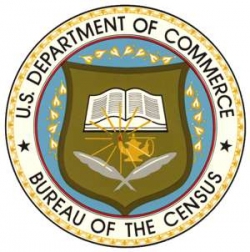Sep
18
2014

Written by Tina Law
This week, the Census Bureau released its annual data on income, poverty, and health insurance coverage in the U.S. On the whole, little change occurred in 2013: the poverty rate declined slightly by half a percent; there was no significant change to the actual number of Americans living in poverty; and median household incomes grew only by $180 (or just an additional $3 per week). While many have hailed these statistics as a sign of post-recession progress, the fact remains that over 45 million Americans continue to struggle to make ends meet. Here at Building Movement Project, we thought, what does this mean for service providers and advocates working on-the-ground and the communities they serve?
For one thing, services remain as critical as ever—even as demand outpaces capacity. Service providers and the programs, supports, and resources they offer are particularly indispensable to the well-being of families with young children (under age 6), as 1 in 5 young children lived in financially insecure homes in 2013. These services are also important to individuals with disabilities, as nearly 1 in 3 individuals with disabilities were living on the brink last year. Another key population is younger adults between the ages of 25 to 34, especially those living with their parents. In 2014, 2 out of every 5 of these younger adults reported struggling to support themselves.
Local organizing and advocacy efforts also continue to be pivotal, as the recession continues to affect communities in different ways. Many more communities in the South, for instance, are facing challenges in meeting their basic needs. Health insurance coverage remains a key issue in Florida, Nevada, and Texas, as nearly 1 in 5 individuals in these states were uninsured last year.
Perhaps most significantly, however, these persistent challenges many Americans face in making ends meet underscore the importance of continued collaboration between service providers and advocates. While the passage of the Affordable Care Act was a key victory for service providers and advocates alike, this week’s Census reports showed that there are still many Americans who lack health coverage and that there are still many opportunities for service providers and advocates to work together to tap into this seemingly nuts-and-bolts policy implementation process to engage their communities in real ways.
So what are some ways that service providers and advocates can collaborate on issues affecting their shared community? BMP Project Team member Linda Campbell recently shared that in Michigan, local service and advocacy groups formed a coalition to call for a higher minimum wage in the state. The state legislature felt such pressure by the mere formation of this coalition that it ultimately passed a minimum wage increase on its own. Though the minimum wage increase was more modest than coalition partners had wanted, it was a significant sign of the collective power of these groups. For additional tools and resources, we encourage you to check out our Service and Social Change Tools page.
In today’s climate, service providers and advocates each play pivotal roles in the well-being of Americans most affected by the continued effects of the recession. By working together, however, service providers and advocates could serve as an even more powerful force for equity.
